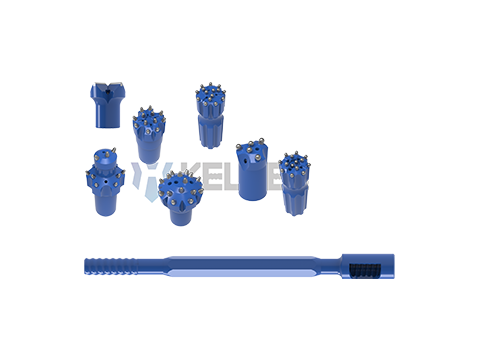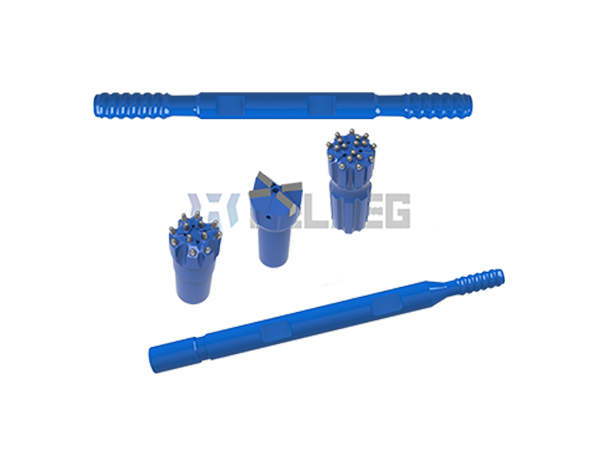2020 官网升级中!现在您访问官网的浏览器设备分辨率宽度低于1280px请使用高分辨率宽度访问。
During the manufacturing process of rock drilling tools, the heating operation has a great influence on the internal and external quality of rock drilling tools. Many forging and heat treatment defects result from improper heating. Correct selection of heating method, control of temperature and heating time, adoption of protective measures, and subsequent processing steps are all key factors to ensure the quality of rock drilling tools.

1. Selection of heating method
During the manufacturing process of rock drilling tools, selecting the appropriate heating method is critical to ensure success. Heating methods include flame heating, resistance heating, induction heating, etc. Flame heating is to direct the flame directly at the connection part through the flame spray gun for heating. Resistance heating generates heat through an energized resistance coil, which conducts the heat to the connection. Induction heating uses an induction current in the heated metal to generate heat.
2. Heating temperature control
When the specific work of induction heating is determined, heating temperature control mainly depends on time. If the specific power is large enough, medium-frequency induction equipment current parameter and inductor selected, the length of different cross-sectional areas to determine the local heating, and control of its heating time can control the heating temperature. Therefore, under the condition that the manufacturing process of rock drilling tools, the heating time can be used as an indirect parameter to control the temperature.
Under the condition of not having temperature control technology and equipment, the temperature is measured visually. Steel heated to 530 ℃ above will emit different colors of light. The temperature reached by each color is as follows: dark brown 530~580°C, reddish brown 580~650°C, dark red 650~730°C, dark cherry 730~770°C, cherry red 770~800°C, bright cherry 800°C ~830℃, light red 830~900℃, orange yellow 900~1050℃, dark yellow 1050~1150℃, light yellow 1150~1250℃, yellow-white 1250~1300℃.
Visual temperature measurement is a relatively simple method for controlling the temperature often used by heating operators in rock drilling tool making. However, to achieve a certain degree of accuracy in visual inspection during the manufacturing process, it is necessary to improve the ability of the eyes to recognize different temperatures under the control of an optical pyrometer. When visually measuring the temperature, we must pay attention to the outside world’s bright light on the brightness of the fire color. If the light is strong, the fire color will be darker. If the light is weak, the fire color will be brighter.

3. Temperature uniformity guarantee
During the heating operation of rock drilling tool manufacturing, there is also a problem with uniform temperature. It is critical to ensure the uniformity of temperature distribution in the joint when performing the heating operation of rock drilling tools. Uneven temperatures can lead to uneven melting of the brazing material, thus affecting the quality of the connection. In addition, when the drill rod is heated in the inductor, there are proximity effects and sharp angle effects, which will directly affect the temperature uniformity of the drill rod cross-section.
4. Control of heating time
The control of heating time is as important as the heating temperature. The heating time should be long enough to ensure the braze material is completely melted and flows sufficiently in the joint to achieve a good connection. However, too long a heating time may cause excessive melting of the brazing material and affect the quality of the joint.
5. Control of heating length
The control of the heating length mainly depends on the number of turns, the length of the inductor, and the technology requirements. The heating part of the drill rod should be straight. Otherwise, the curved part makes it easy to contact the inductor, and the arcing phenomenon occurs, which will cause corrosion pits on the surface of the drill rod and form a source of fatigue cracks.
6. Heating protection measures
During the heating operation of rock drilling tools, take some protective measures to ensure the operator’s safety and the proper operation of the equipment. Flame heating needs to pay attention to prevent flame spatter, resistance heating needs to prevent wire aging or short-circuit, and induction heating needs to pay attention to the impact of the magnetic field on the equipment.